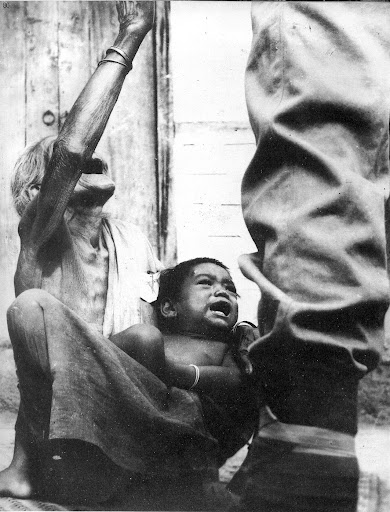39 Years and the Ghosts of Nellie Massacre Haunt Assam
India has forgotten. Justice never got done. February 18, 39 years ago, under a Congress government in both the state and centre, thousands of agriculturists, Bengali speaking Muslims were massacred in cold blood in the parochial bloodletting that was both an accompaniment and brutal legacy of the Assam movement. It did not take long for the massacre to work itself out, it was all over in a matter of six hours. Ironically, though the first such targeted pogrom, it has been least discussed and even less remembered. The terms “outsider”(the bahiragata ), “foreigner (bidexi)”, “illegal migrant” and now “ghuspetiya” have the evil power to influence brute violence and exclusion, still. The ethnic clash that took place in Nellie was seen as a fallout of the decision to hold the Assembly elections in 1983 (boycotted by the AASU) despite stiff opposition from several elements in the state. Four hundred companies of the CRPF and 11 Brigades of the Indian army stationed in the state for the elections could not protect and save innocent lives that were targeted in a brute attack on February 18. Compensation was meagure, Rs 5,000 for lost lives and Rs 3,000 for the injured. The official Tiwari Commission report on the Nellie massacre is still a closely guarded secret (only three copies exist). The 600-page report was submitted to the Assam Government in 1984 but the government of the day decided not to make it public, and subsequent Governments followed suit
Who were the perpetrators and were they ever punished? Nellie is a small area in central Assam’s Nagaon district and at the time some intrepid journaliusts, reporters and correspondents from the BBC, Indian Express and local media have documented the tale at great risk to themselves. Three media personnel — Hemendra Narayan of Indian Express, Bedabrata Lahkar of Assam Tribune and Sharma of ABC. At a minimum, the massacre claimed the lives of 2,191 people (unofficial figures run at more than 10,000)]from 14 villages of the Nagaon district—Alisingha, Khulapathar, Basundhari, Bugduba Beel, Bugduba Habi, Borjola, Butuni, Dongabori, Indurmari, Mati Parbat, Muladhari, Mati Parbat no. 8, Silbheta, Borburi and Nellie. Unofficial figures take the figure to an appalling 10,000.
One of the chroniclers that stands out is the courageous worj of Sabita Goswami’s autobiographical account, Along the Red River, starts with a quote about how pain nourishes courage and that people could not be brave if only wonderful things happened to them. The book is full of vivid and painful aspects of the veteran journalist’s eventful life. Goswami bravely documented the Nellie msaacre and the BBC under Mark Tully finally ran the story while the 7th Non Alligned Summit was on in Delhi. The work of Goswami centred the horrific February 18 Nellie massacre and through her the the world finally got to see the “Frankensteins” created by the Assam agitation. Goswami has counted more than 7,000 people killed in that area during that time; she personally accounted 674 bodies that fateful day.Hemendra Narayan’s book, Nellie Massacre, Makiko Kimura’s 2013 book, The Nellie Massacre Of 1983: Agency Of Rioters, and Subasri Krishnan’s documentary, What the Fields Remember, and BBC’s 2018 documentary are some accounts. Journalist Geeta Seshu has made a documentary on Sabita Goswami’s decade long coverage of violence in the north-east.



In October 2007, a young Assamese writer, Diganta Sharma wrote Nellie 1983, a book published Eklabya Prakashan, Jorhat, Assam. This book, now in multiple editions in Assamese and Bengali is both a example of brave truth-telling and painstaking journalistic documentation. This author had the privilege to meet the author in December 2022 and we shall feature an in-depth interview with him soon.
First Person
‘Rabia Begum was feeding breast to her 17 month daughter sitting in a stool in theveranda of her road side house. Her other children were playing in the smallcourtyard. Her husband Chandeh Ali was busy with some work in the back side of thehouse. They did not even guess what was to come to them after a few minutes.Suddenly the playing children rushed towards their mother in panic and grasped her.Already there were hue and cry around their house. Hearing desperate cries of hischildren when Chandeh Ali just entered the courtyard he saw a group of peoplearound with swords, daggers, knives, tridents and petrol. Attackers got divided intothree groups. One group chased running Chandeh Ali. Another group went to set fireon the house. And the other group started striking their weapons on children in theirmother’s lap. In minutes they were transformed into a heap of human limbs. Thehouse was rendered into an ash-heap. And Chandeh Ali? A trident struck him frombehind.”

(Excerpts from Diganta Sharma depicted ‘Nellie, 1983: A Postmortem Report into the MostBarbaric Massacre of Assam Movement’, reviews by Waliullah Ahmed Laskar

In his book, Diganta Sharma has painstakingly collected over nine hundred names of the Victims of the Nellie Massacre:
Read complete list here
Get the latest reports & analysis with people's perspective on Protests, movements & deep analytical videos, discussions of the current affairs in your Telegram app. Subscribe to NewsClick's Telegram channel & get Real-Time updates on stories, as they get published on our website.
























